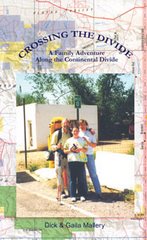
Leaving the Big Hole Battlefield I hiked north into a much anticipated trek through the Anaconda-Pintler Wilderness area. This is big country with a lot of elevation. High mileage days in this area involves climbing as much as 5,000 feet in elevation each day and that is just the upstroke. By this time in the hike my body responded very well to the task of crossing this demanding terrain.
This Wilderness, which straddles the Continental Divide in the Anaconda Range, has it all in terms of mountain grandeur, whether that entails high and rugged peaks, cirques, U-shaped valleys, or glacial moraines. Sparkling lakes and tumbling streams, fed by the icy water running off the snowfields above the timberline, enhance the beauty. Snow-free seasons are short. Precipitation, mostly in the form of snow, is heavy compared to the nearby valleys. The cold lakes I now drink from were frozen just a month ago and will be again in a month’s time. Snowstorms can occur at any time during the year, including July and August.
This section of the 3,200-mile Continental Divide National Scenic Trail (here called the Hi-Line Trail) traverses the length of the Wilderness and provides access to many of the most remote and rewarding spots.
Late in the afternoon I would stop to prepare my big meal for the day. I always eat near a lake or stream where I have access to water for cooking and cleaning my gear. In the Anaconda-Pintler complex, these areas are always calendar quality settings. I would be tempted each afternoon to set up camp early and stay in one of these picturesque spots, but finishing the trail before fall snows could stop me, demanded I continue on until dark each day.
As I sat along the trail one afternoon having a snack, Andy came around the bend in the trail. I had not seen him since Colorado nearly two months earlier. We did a lot of catching up and walked together, on and off, for the next couple days. My daily mileage destinations through this awesome wilderness area were passes. I would target a pass in the morning and it would be my goal to reach that pass before nightfall. Many experienced hikers will recommend that you hike high and sleep low. I am not part of that belief system. I like to sleep high. I prefer to sleep in the lofty, often windy, high country. Lower elevation often means more condensation in my tent and never the incredible aerial views offered from a towering tent site.
My second night I climbed until after dark. I had a full moon and good trail. The trail advanced at a gradual incline for the first few miles. As darkness fell I was making good time. I continued hiking after dark because as I neared the base of the peak, the slope became very steep and I could not find a flat area to set camp. Hiking after sunset, even with a full moon, is not the smartest decision to make in the back country. I had stopped many nights along the trail at dusk and set up my bivy tent in the middle of the trail because it was the only clear spot I could find. But that was not a choice in this case. I was near the top of Cutaway Pass and the terrain was steep for maintaining footing—sleeping was not an option.
When I reached the narrow pass above the Queener Basin I searched around with my flashlight for a flat spot to park my tent. I found a little nook in the rocks and slept beneath a moon that lit the landscape in shadowed relief. I was up and moving with first light. I did not realize until the next morning that Andy was camped just down the trail a few hundred yards. He was breaking camp in the morning as I passed and we continued on together that day to Rainbow Mountain. Andy was also trail hardened. He could eat up mountain trail as if it were flat path. We stopped at a junction to Storm and Seymour Lake. We had a snack and said our good-byes. I knew this would be our last reunion on the trail. Andy was taking the Anaconda-Cutoff which takes the trail northwest to the town of Anaconda where he planned for his next resupply. The cutoff would save him over a hundred miles. I was continuing to follow the Divide southeasterly which would take me down and around Butte, Montana. This decision would cost me a week of hiking but I wanted to stay with the Divide even though I knew it would mean a lot of forest road walking through populated areas.
From the open highlands I could see below me Upper Seymour Lake. It was a rugged mountain lake lit like a jewel by the afternoon sun. I marched down the trail into a wooded valley that held the lake and then followed a creek that helped it spill into the Big Hole.
This Wilderness, which straddles the Continental Divide in the Anaconda Range, has it all in terms of mountain grandeur, whether that entails high and rugged peaks, cirques, U-shaped valleys, or glacial moraines. Sparkling lakes and tumbling streams, fed by the icy water running off the snowfields above the timberline, enhance the beauty. Snow-free seasons are short. Precipitation, mostly in the form of snow, is heavy compared to the nearby valleys. The cold lakes I now drink from were frozen just a month ago and will be again in a month’s time. Snowstorms can occur at any time during the year, including July and August.
This section of the 3,200-mile Continental Divide National Scenic Trail (here called the Hi-Line Trail) traverses the length of the Wilderness and provides access to many of the most remote and rewarding spots.
Late in the afternoon I would stop to prepare my big meal for the day. I always eat near a lake or stream where I have access to water for cooking and cleaning my gear. In the Anaconda-Pintler complex, these areas are always calendar quality settings. I would be tempted each afternoon to set up camp early and stay in one of these picturesque spots, but finishing the trail before fall snows could stop me, demanded I continue on until dark each day.
As I sat along the trail one afternoon having a snack, Andy came around the bend in the trail. I had not seen him since Colorado nearly two months earlier. We did a lot of catching up and walked together, on and off, for the next couple days. My daily mileage destinations through this awesome wilderness area were passes. I would target a pass in the morning and it would be my goal to reach that pass before nightfall. Many experienced hikers will recommend that you hike high and sleep low. I am not part of that belief system. I like to sleep high. I prefer to sleep in the lofty, often windy, high country. Lower elevation often means more condensation in my tent and never the incredible aerial views offered from a towering tent site.
My second night I climbed until after dark. I had a full moon and good trail. The trail advanced at a gradual incline for the first few miles. As darkness fell I was making good time. I continued hiking after dark because as I neared the base of the peak, the slope became very steep and I could not find a flat area to set camp. Hiking after sunset, even with a full moon, is not the smartest decision to make in the back country. I had stopped many nights along the trail at dusk and set up my bivy tent in the middle of the trail because it was the only clear spot I could find. But that was not a choice in this case. I was near the top of Cutaway Pass and the terrain was steep for maintaining footing—sleeping was not an option.
When I reached the narrow pass above the Queener Basin I searched around with my flashlight for a flat spot to park my tent. I found a little nook in the rocks and slept beneath a moon that lit the landscape in shadowed relief. I was up and moving with first light. I did not realize until the next morning that Andy was camped just down the trail a few hundred yards. He was breaking camp in the morning as I passed and we continued on together that day to Rainbow Mountain. Andy was also trail hardened. He could eat up mountain trail as if it were flat path. We stopped at a junction to Storm and Seymour Lake. We had a snack and said our good-byes. I knew this would be our last reunion on the trail. Andy was taking the Anaconda-Cutoff which takes the trail northwest to the town of Anaconda where he planned for his next resupply. The cutoff would save him over a hundred miles. I was continuing to follow the Divide southeasterly which would take me down and around Butte, Montana. This decision would cost me a week of hiking but I wanted to stay with the Divide even though I knew it would mean a lot of forest road walking through populated areas.
From the open highlands I could see below me Upper Seymour Lake. It was a rugged mountain lake lit like a jewel by the afternoon sun. I marched down the trail into a wooded valley that held the lake and then followed a creek that helped it spill into the Big Hole.












No comments:
Post a Comment